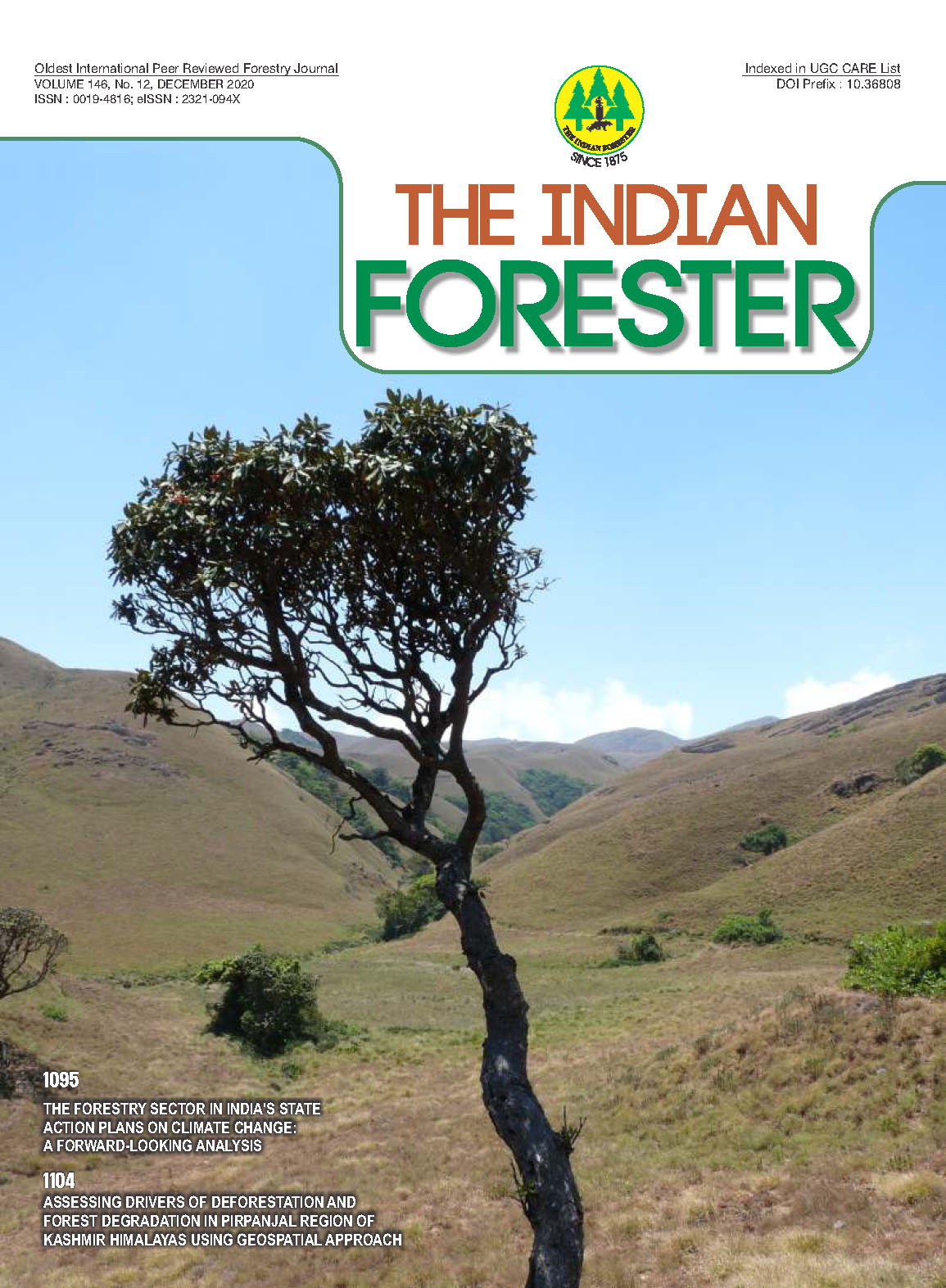Analysis of Genetic Diversity for Wood Variations in Casuarina equisetifolia Forst.
DOI:
https://doi.org/10.36808/if/2020/v146i12/156775Keywords:
Casuarina equisetifolia, Pulping, Correlation, Clustering.Abstract
Casuarina equisetifolia Forst. is grown commercially as excellent wood for charcoal and scaffoldings. The exploration of newer avenues for production of pulp wood has now become utmost essential to bridge ever increasing gap between demands and supply of pulp woods, and therefore acceptability of Casuarina equisetifolia as raw material for paper industries was scrutinized, and accordingly a series of genotypes were analyzed for wood anatomical and pulping traits. The pulp yield varied from 45.10 (CHCE890401) to 51.95 (CHCE893004) with an average of 49.34%. The correlation analysis revealed significantly positive correlation between fiber length and fiber diameter (0.52) and kappa number and ash content (0.64), however significantly negative correlation was recorded between fiber diameter and slenderness ratio (-0.96). Based on wood parameters, fifteen genotypes were grouped into six clusters with inter-cluster distance varying from 9.24 to 32.33 and intra-cluster distances from 4.38 to 8.97. Cluster VI was not only found to be the most divergent cluster but also consisted three most suitable pulp producing genotypes. The results clearly indicate that selected genotypes of Casuarina equisetifolia could be grown as an alternate pulp wood that could play a significant role in sustained supply of raw material for paper and pulp industries.References
Anon (1984). Casuarinas; Nitrogen fixing trees for adverse sites. National Research Council (NRC), National Academy Press. Washington DC, p 118.
Anon (2014). Business Standards (News Paper), Published on February 4. Mumbai, India.
Anon (2011). India State of forest Report, Ministry of Environment and Forests, Government of India, New Delhi, India.
Dommergues Y.R., Diem H.G. and Sougoufara B. (1990). Nitrogen Fixation in Casuarinaceae : Quantification and improvement. In: Advances in Casuarina Research and Utilization (M. H. El-Lakany, J. W. Turnbull JW and J. L. Brewbaker, Eds) . Cairo, Egypt, pp 110-121.
Dutt D., Lal M., Malik R. S. and Upadhaya M. K. (2005). Development of specialty paper is an art: Seed germination paper from indigenous raw material part- XIII. J. Sci. Ind. Res., 64(6): 440-442.
Guha S.R.D. and Karira B.G. (1981). Chemical, semi chemical and chemi-mechanical pulps from Casuarina equisetifolia. The Indian Forester, 107(3): 174-177.
Hegde N.G. (1993). Scope for production of industrial raw materials through farmers. In : Proceeding of ICFRE/FAO/ UNDP Workshop on Production of Genetically Improved Planting Material for Afforestation Programme (K. Vivekanandan, K.N. Subramanian, N.Q. Zabala and K. Gurumurthi, Eds), RAS/91/004. Philippines. Document No. 7, pp 150-164.
Kandeel S.A.E., Isebrands J.G. and Aly H.M. (1982). Windbreak grown Casuarina and Eucalyptus trees for unbleached Kraft pulp. Wood and Fiber Science, 14(4): 287 395.
Kulkarni H.D. (2013). Pulp and paper industry raw material scenario- ITC plantation a case study. IPPTA, 25(1): 79-82.
Maheswari S., Nayak R.G., Meshramkar P.M. and Jaspal N.S. (1979). Comparative studies on the pulping and papermaking properties of Casuarina equisetifolia and Eucalyptus hybrids. Indian Pulp and Paper, 34(3): 9-13.
Perrier X., Flori A., Bonnot F. (2003). Data analysis methods. In : Genetic Diversity of Cultivated Tropical Plants (Eds. P. Hamon, M. Seguin, X. Perrier and J. C. Glaszmann). Science Publishers, Montpellier, France. Pp. 43–76.
Rao R.V., Kothiyal V., Sreevani P., Shashikala S., Naithani S. and Singh S.V. (1999). Yield and strength properties of pulp of some clones of Eucalyptus tereticornis. The Indian Forester, 125(11): 1145-1151.
Storebraten S. (1990). Sulfatfabrikken – virkesforsyningens soppelplass Foredrag i PTF, Masseteknisk gruppe, 9 Oktober. Oslo, Norway p 25.
TAPPI, Technical Association of the Pulp and Paper Industry, (1954). Holo-cellulose in Wood. T9 m 54.
TAPPI, Technical Association of the Pulp and Paper Industry, (1988). TAPPI Standards : Regulations and Style Guidelines (Revised). TAPPI, Atlanta.
Zobel B. J. (1993). Clonal forestry in eucalypts. In : Clonal forestry II : Conservation and Applications (M. R. Ahuja and W. J. Libby, Eds), Springer-Verlag. New York pp 139-148.
Downloads
Downloads
Published
How to Cite
Issue
Section
License
Unless otherwise stated, copyright or similar rights in all materials presented on the site, including graphical images, are owned by Indian Forester.





